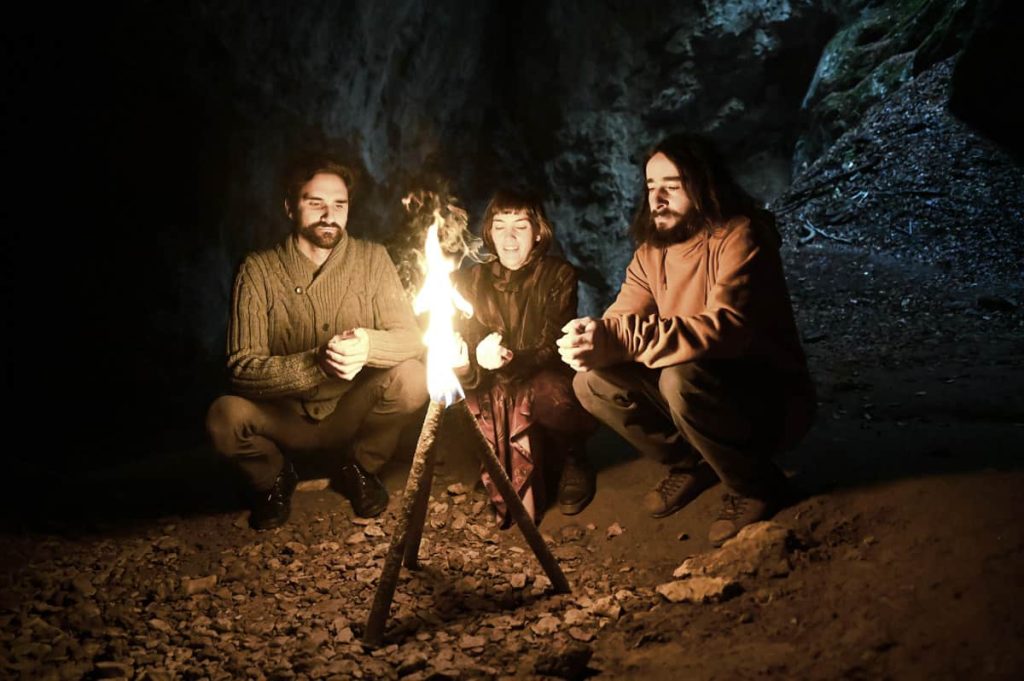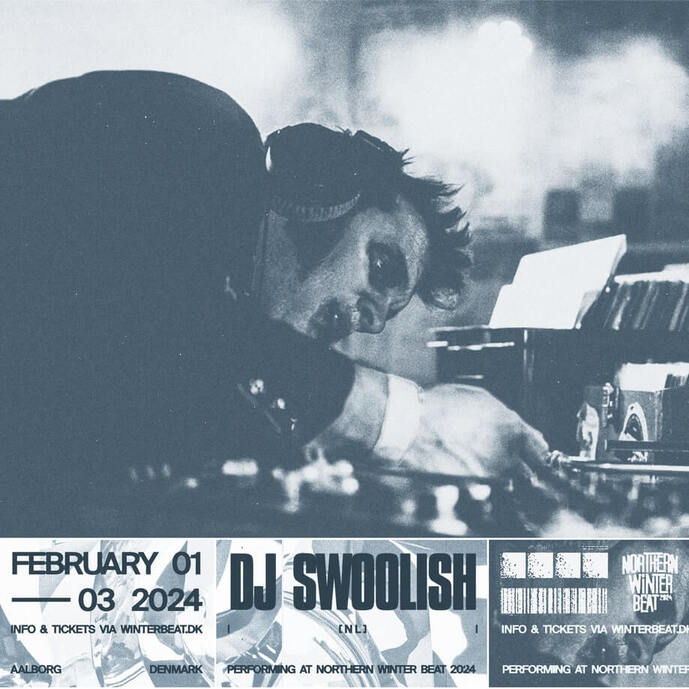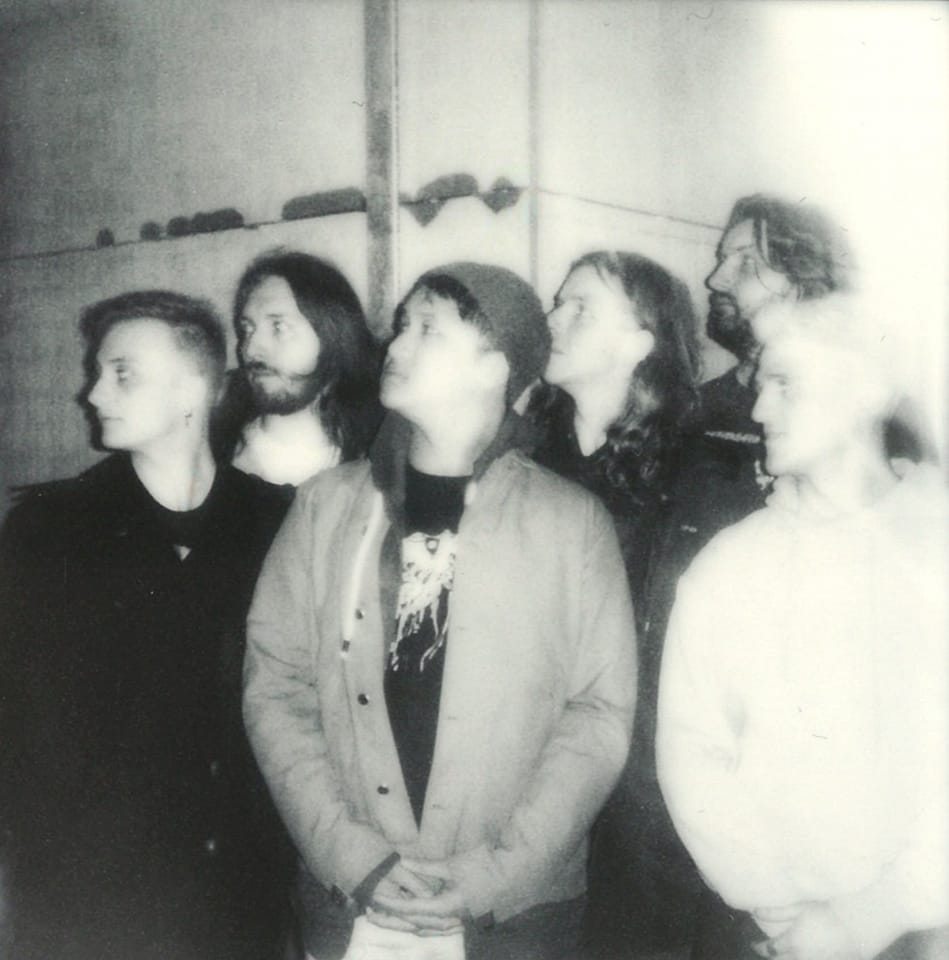NORTHERN WINTER READ:
ŠIROM

Interview with Iztok Koren from Širom.
by Mikkel Brandt
“We call it ‘imaginary folk’, so it’s a kind of folk music, but it’s not traditional. It’s our own music, and it’s not similar to Slovenian folklore music. It’s more imaginary, in a way. Maybe somewhere, in some parallel universe, this could be considered as folk music. That’s the idea.”
This is how Iztok Koren describes Širom’s music. The Slovenian trio, which he’s one-third of, also consists of Samo Kutin and Ana Kravanja. All three are multi-instrumentalists, and some of the instruments Iztok plays in the band include banjo, percussion, steel drum, tubular bells, and balafon. The latter is a kind of wood xylophone with its origin in West Africa.
“Our style of music wasn’t decided rationally. When the three of us started playing together, we played acoustic drone music, without rhythm and melodies, and from there, we started to experiment and see what else we could do together, and then this style emerged. So there was this organic development of the music,” Iztok explains.
The members of the trio have quite different musical backgrounds – spanning from industrial, noise, and post-rock to folk and free, improvisational music.
“We were all part of this DIY scene, putting up shows and festivals. We come from different parts of Slovenia, so we were all active in our local scenes for many years. As organizers, bookers, and so on. So we have known each other for a long time from the music scene because we organized concerts for each other. But then, seven years ago, we went on a tour together. We were all in different bands, but then this idea of doing something together came up,” he says.
“It was clear to us that we didn’t want to play traditional music or some kind of fixed style of music. We were very open to experimentation, and the only rule was only to play acoustic instruments. And we still do that, even though we have had some collaborations with different artists, where we have included electronics, but in Širom, we only play acoustic instruments,” Iztok points out and continues:
”When we create music, we improvise a lot. So we have these long jam sessions which we record, and then we analyze them and try to put together parts that we like. And since all three of us have to be satisfied with the result, it’s a long process where we try out different combinations of instruments and try out the ideas in different contexts to find this common result that we all like. So it’s a product of all three of us. So maybe that’s also why the results can be so colorful.”
As mentioned earlier, Širom is a band that uses a variety of instruments to create their unique sound world. Here it’s not rare that the sound of homemade instruments gets mixed with traditional instruments, played in nontraditional ways.
“Samo Kutin, for example, when he plays the hurdy-gurdy… You can call it a medieval synthesizer,” Iztok laughs and continues:
“Then he experiments a lot. He plays it in non-ordinary ways. He uses spring reverb to change the sound and plays it in ways it’s not meant to be played. He also uses a lot of everyday objects. Like cooking pans and duct tape. A lot of things that make sounds. He also plays some percussion and string instruments. Tamburica, for example. A lot of stuff.”
Iztok also depicts some of the musical roles Ana Kravanja plays:
“She plays violin, viola, and ribab, which is a Moroccan string instrument. She also sings. There’re no lyrics in our music, but she uses the voice as an instrument. I think all together we play around 20, or 25, instruments.”
When Širom plays live, there’s a lot of room for improvisation, which affects their compositions over time.
“On our records, everything is played live, without overdubbing, without cutting. The compositions are captured in the moment, and then they go their own way,” Iztok says.
“When we finish a song, the structure is fixed in a way. We know which combination of instruments we will be playing, or some melodies are perhaps always the same. But then there’re a lot of parts where we know that we can be improvising and be more free. So every song evolves when we play it live,” he says and continues:
“This is the ‘folk part’ of the music. That it’s alive. Music should be alive and not something from a museum. The songs should always be evolving.”
Because of this free and sometimes hypnotic nature of Širom’s compositions, I ask Iztok if they experience trance on stage themselves.
“Yeah, it’s pretty trancy, and yeah, we fall in a trance a lot of the times, of course. Especially when we play this new material, which is more repetitive, and yeah, it’s really fun to play. Especially when we get this feeling of riding the wave. That we’re all together,” he answers.
Iztok also describes Širom’s concerts as a kind of choreography with a lot of instrument changes.
“It’s really fun to play, and we feel relaxed. Of course, there can be mistakes when it’s live music. But we incorporate those in the musical story in the moment. I like these ‘mistakes’, which are not mistakes. It’s just what happens in that moment. For me, playing live is not about perfection. It’s about this common feeling that we’re in this together,” he says and tells me how people’s reactions to their live shows vary quite a lot:
“The audience has very different experiences. Some have very emotional responses, and some get memories from the past. Or visions. A lot of people talk about the stories they experience. Like travelling. Like a saga or something. And these different feelings also reflect the three of us in a way.”
“The three of us all have different things we search for in our music, and we have different inspirations. For Samo and Ana, nature is a big inspiration, as well as the whole experimentation with instruments and how to play them in different ways. And they’re more visual thinking in a way, whereas I find myself searching for the more emotional aspects. These everyday emotions. Fear, anger, shame, guilt, or even childhood memories. Feelings and experiences from the past that you relive through the music,” Iztok says and continues:
“We also like to use the music as a kind of medium. As a language for body sensations that are hard to describe otherwise. Or feelings that words can’t describe. Music might give access to these feelings. We try to go with the feelings. You can talk about it to a certain degree, and then you can’t explain anymore.”
Experience Širom at Northern Winter Beat 2023 January 28th at Huset in Hasserisgade.



